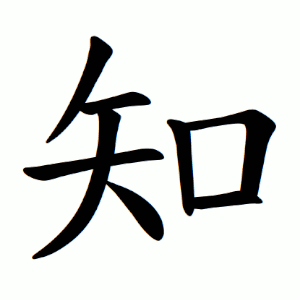知
- to know, to inform;
Etymology
In oracle bone script (甲骨文 jiǎgǔwén), it was composed of:
干 (방패 간, “shield,” a symbol for a hunting weapon);
矢 (화살 시, “arrow”);
口 (입 구, “mouth,” indicating oral transmission).
Together these conveyed the idea of passing on hunting and battle experience orally.
By the time of the bronze inscriptions (金文 jinwen), 干 was dropped and 曰 (가로 왈, “to speak”) was added, forming 智. Later, the character split into 知 and 智.
The relationship between 知 and 智 is notable:
In terms of character form, 智 appears earlier than 知 in bronze inscriptions. In terms of meaning, however, scholars believe the verb “to know” (知) gave rise to the nouns “knowledge” and “wisdom” (智).
Words that derived from 知
- 고지(告知)–notice
- 무지(無知)–ignorance; stupidity
- 선지자(先知者)–prophet; visionary
- 주지(周知)–instilling; being established
- 주지하다(周知하다)–be aware; understand; know
- 지각(知覺)–perceptivity; awareness; perception; sensation
- 지능(知能)–intelligence
- 지성(知性)–intellect; intelligence; brain
- 지성인(知性人)–intellect
- 지식(知識)–knowledge
- 지우(知友)–close friend
- 지인(知人)–acquaintance
- 철부지(철不知)–child; immature person
